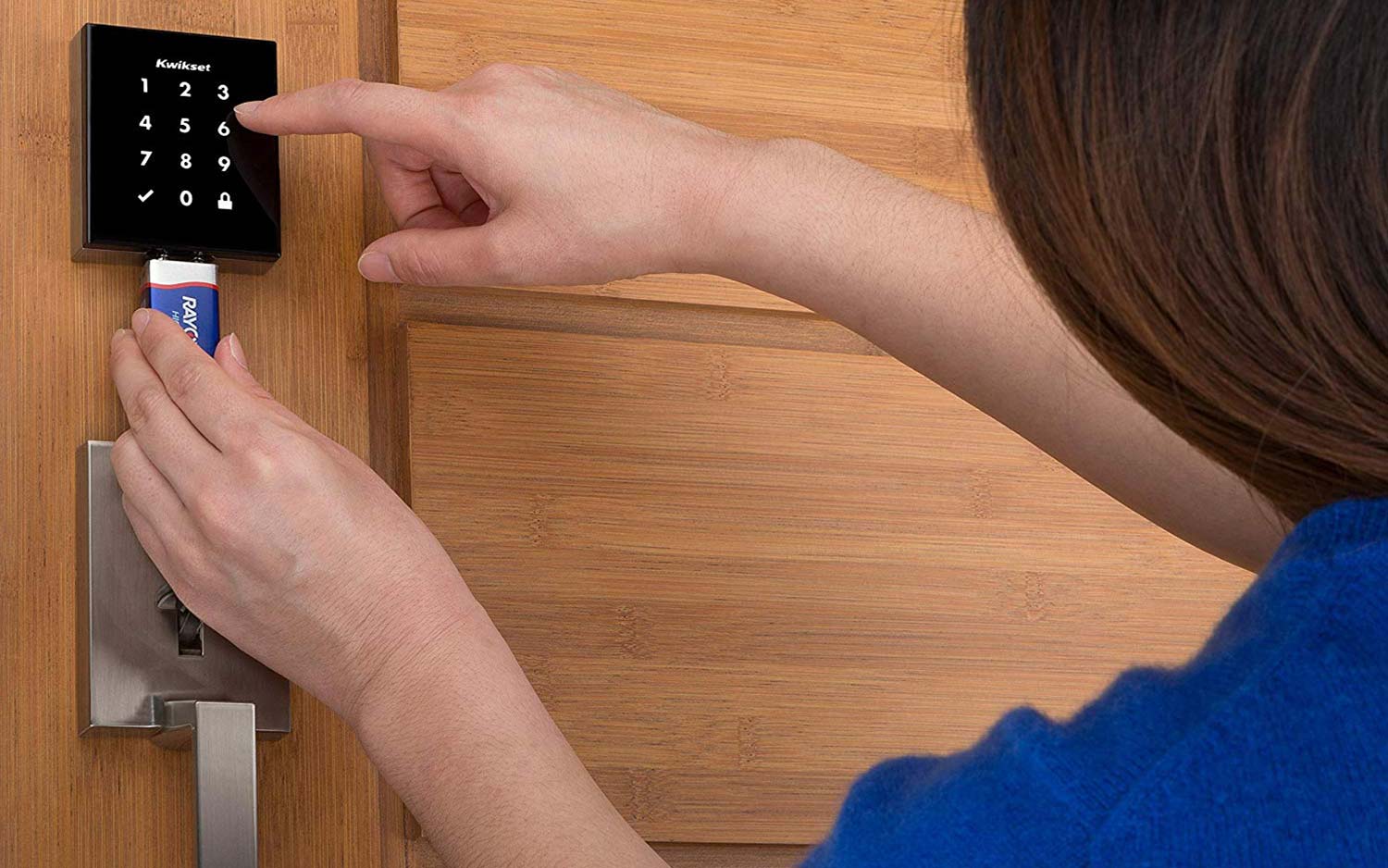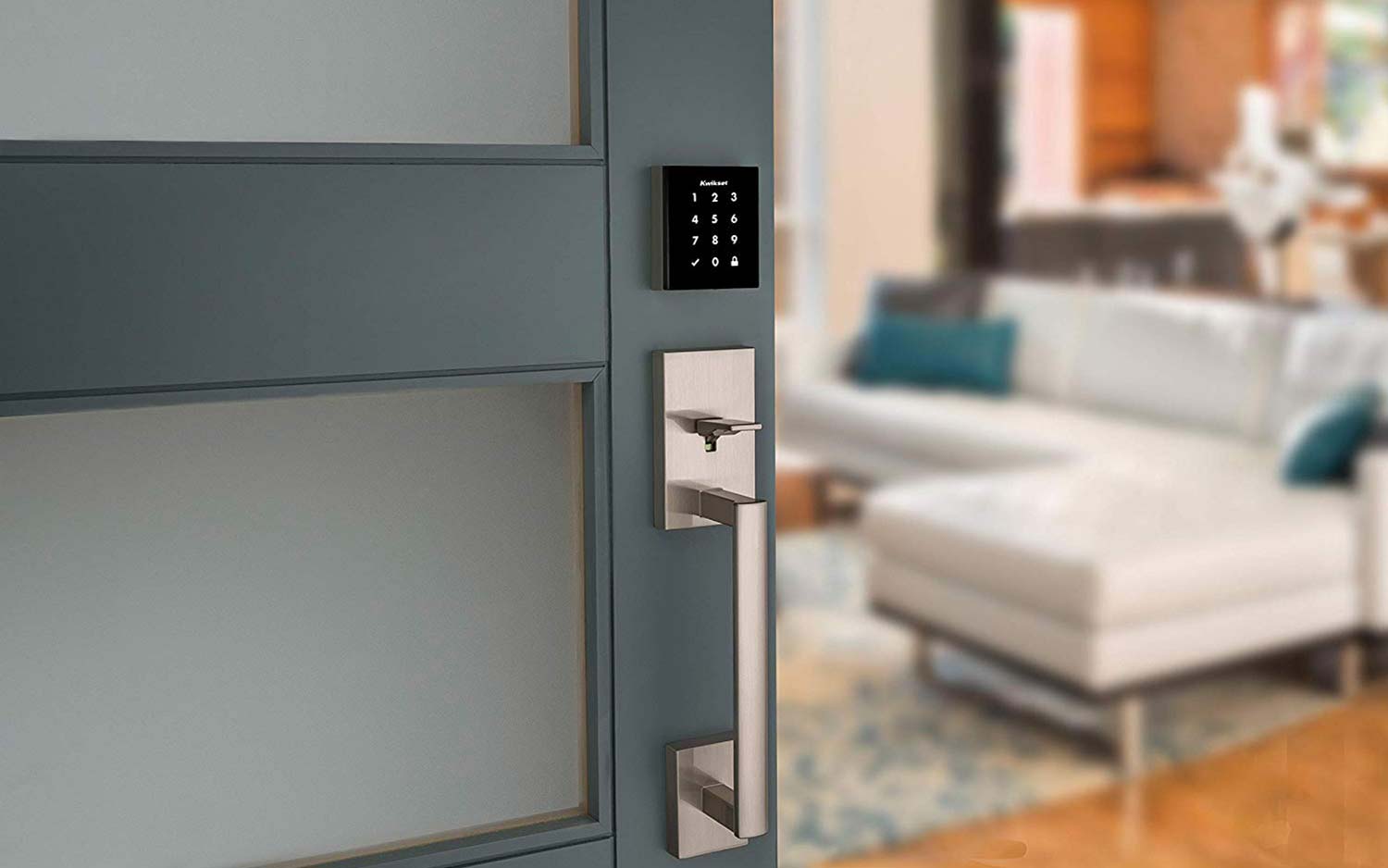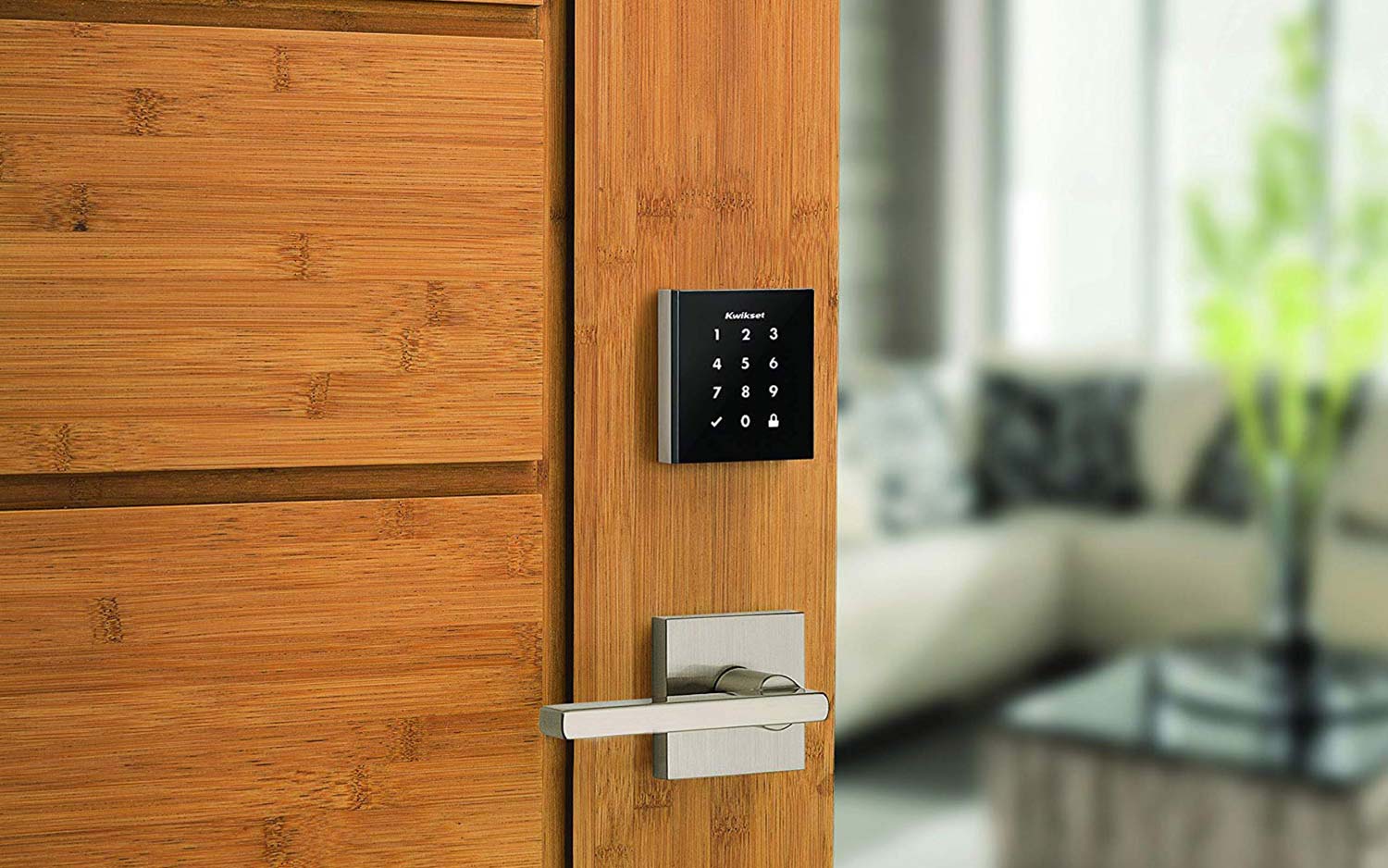Tom's Guide Verdict
The Obsidian is a very nice-looking smart lock for minimalists, but smart home integration requires a Z-Wave smart home hub.
Pros
- +
Clear install process
- +
Clean, striking design
- +
SecureScreen keeps others from guessing codes
Cons
- -
Sometimes takes a few touches to respond
- -
Requires Z-Wave hub to work with Alexa or Google Assistant
- -
Has only 30 codes
Why you can trust Tom's Guide
Do you live in a minimalist paradise filled with nothing but the essentials? Then the Kwikset Obsidian is the lock for you. This device replaces outmoded concepts like door keys with a shiny, black keypad. Touch it and an illuminated keypad lights up. Enter your code (the lock can hold up to 30), and the door opens. Touch the lock icon, and the door locks.
And … that's about it. The model we tested also comes with Z-Wave wireless support, so you can control or monitor the lock with Alexa or Google Assistant, provided you have a Z-Wave smart home hub (like Samsung's SmartThings). However, the Obsidian's minimalist design was enough to crack our best smart locks page, but just barely.
Kwikset Obsidian: Price and availability
The Kwikset Obsidian smart lock was launched in 2017; it's available in two versions: A non-connected model, which can store up to 16 codes, costs about $140. A connected model, which works with Z-Wave smart home hubs, costs about $210.
Kwikset Obsidian Review: Design
The front of the Obsidian is, as the name suggests, a shiny, black, square slab that sits on the front door. In true Henry Ford style, it comes in any color you want, as long as it's black. The lock certainly looks impressive, but it really needs a simple, modern-design door to set it off. Put it on an older, wooden door, and it will look out of place. Put it on a flat, white modern door, and it looks very impressive.
Kwikset Obsidian Review: Setup and installation
Installation of the Obsidian is easy, thanks to thoughtful touches like color-coded screws for different door thicknesses. You can program up to 30 codes, which is far fewer than most other smart locks offer; also, none of the codes can be programmed to expire at a given time, which you can do with August's smart locks. If the four AA batteries that power the lock run out, you can touch a 9-volt battery to the base of the front touch-screen panel and power the lock temporarily.

Kwikset Obsidian Review: Performance
An anti-stick coating on the touch screen repels fingerprints. If you are really paranoid, you could take advantage of a feature called SecureScreen; it prompts you to touch random digits before you enter your code, so no one can guess the code by looking at fingerprint marks on the screen.

We did find that the Obsidian sometimes took a few touches to wake up and illuminate the keypad so you can enter the keycode. Once the device was awake, though, it sensed most touches without issues.
Get instant access to breaking news, the hottest reviews, great deals and helpful tips.
Kwikset Obsidian Review: Smart home compatibility
If you want to control or monitor the Obsidian remotely, you'll have to connect it to a smart home hub with Z-Wave; for most people, this means getting Samsung's SmartThings hub ($70). Once connected, you'll be able to control the lock from your smartphone or with Alexa or Google Assistant.
Kwikset Obsidian Review: Verdict
The Kwikset Obsidian is an impressive-looking smart lock for a modernist house. It's easy to use and has some nice security features, too. However, you'll have to spend at least $70 on a smart home hub if you want to control this lock remotely or use it with Alexa or Google Home. And it can be programmed with only 30 codes, as opposed to the hundreds that other smart locks offer.
Among the best smart locks, the August Wi-Fi Smart Lock is our favorite for its built-in Wi-Fi, its ease of installation, and its compatibility with the widest range of smart home devices. Among keyless locks, we prefer the Yale Real Living Assure SL, which has 250 codes and works with more smart-home systems. But, the Kwikset Obsidian is a capable smart lock for those who want a modern look.
Credit: Kwikset

Michael A. Prospero is the U.S. Editor-in-Chief for Tom’s Guide. He oversees all evergreen content and oversees the Homes, Smart Home, and Fitness/Wearables categories for the site. In his spare time, he also tests out the latest drones, electric scooters, and smart home gadgets, such as video doorbells. Before his tenure at Tom's Guide, he was the Reviews Editor for Laptop Magazine, a reporter at Fast Company, the Times of Trenton, and, many eons back, an intern at George magazine. He received his undergraduate degree from Boston College, where he worked on the campus newspaper The Heights, and then attended the Columbia University school of Journalism. When he’s not testing out the latest running watch, electric scooter, or skiing or training for a marathon, he’s probably using the latest sous vide machine, smoker, or pizza oven, to the delight — or chagrin — of his family.

